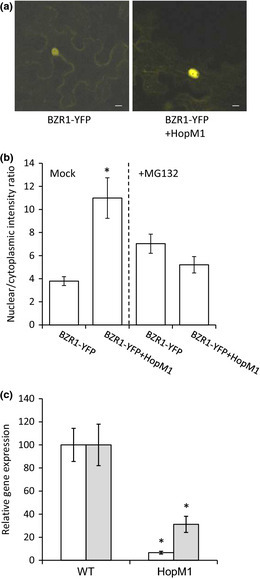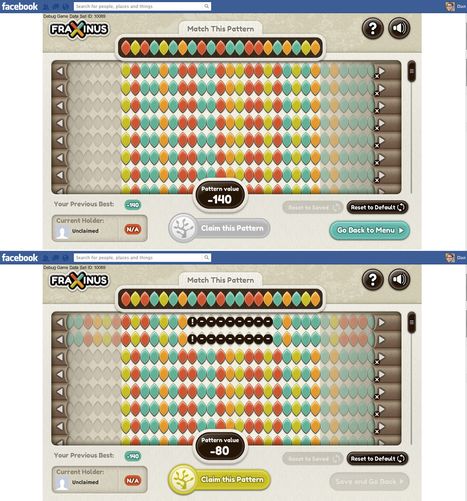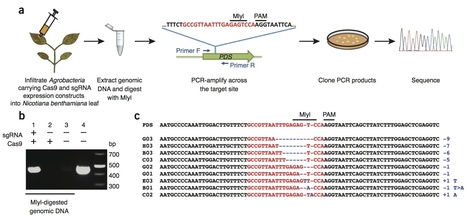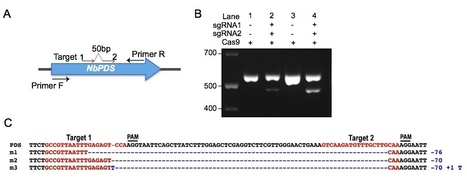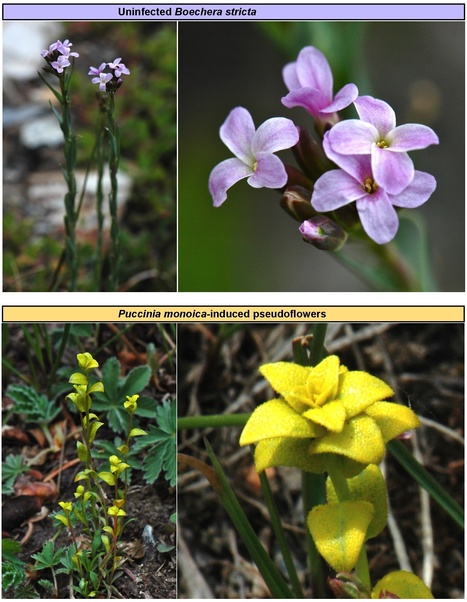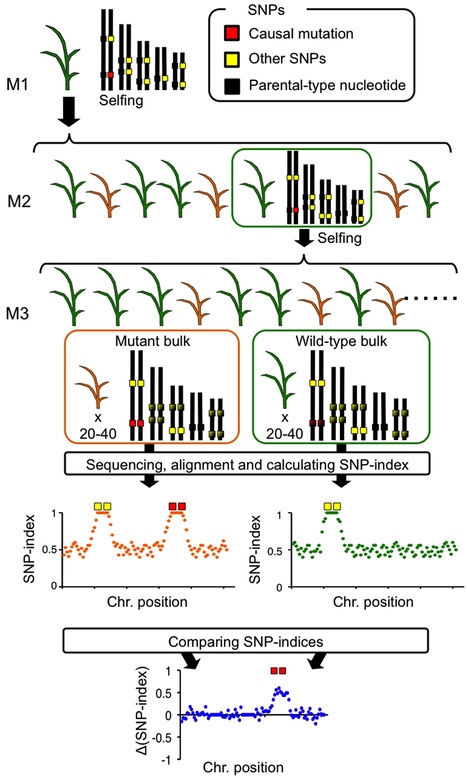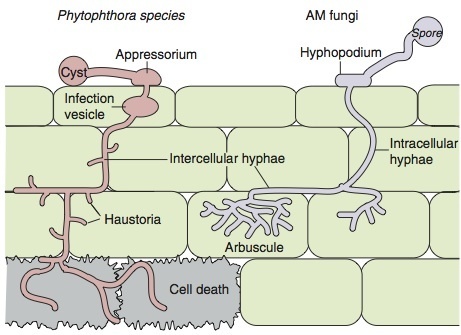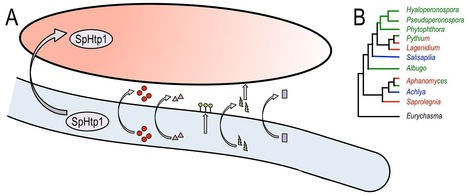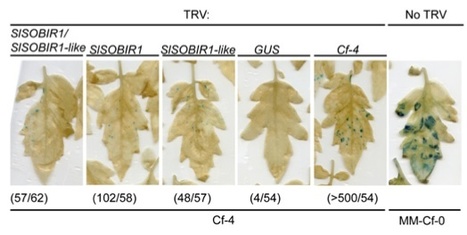 Your new post is loading...
 Your new post is loading...

|
Scooped by
The Sainsbury Lab
December 23, 2013 6:24 AM
|

|
Rescooped by
The Sainsbury Lab
from Publications
November 26, 2013 4:32 AM
|
Most fruits in our daily diet are the products of domestication and breeding. Here we report a map of genome variation for a major fruit that encompasses ~3.6 million variants, generated by deep resequencing of 115 cucumber lines sampled from 3,342 accessions worldwide. Comparative analysis suggests that fruit crops underwent narrower bottlenecks during domestication than grain crops. We identified 112 putative domestication sweeps; 1 of these regions contains a gene involved in the loss of bitterness in fruits, an essential domestication trait of cucumber. We also investigated the genomic basis of divergence among the cultivated populations and discovered a natural genetic variant in a β-carotene hydroxylase gene that could be used to breed cucumbers with enhanced nutritional value. The genomic history of cucumber evolution uncovered here provides the basis for future genomics-enabled breeding.
Via Kamoun Lab @ TSL

|
Scooped by
The Sainsbury Lab
October 11, 2013 6:02 AM
|
Flagellin perception in Arabidopsis is through recognition of its highly conserved N-terminal epitope (flg22) by flagellin-sensitive 2 (FLS2). Flg22 binding induces FLS2 heteromerization with BRI1-associated kinase 1 (BAK1) and their reciprocal activation followed by plant immunity. Here, we report the crystal structure of FLS2 and BAK1 ectodomains complexed with flg22 at 3.06 angstroms. A conserved and a nonconserved site from the inner surface of the FLS2 solenoid recognize the C- and N-terminal segment of flg22, respectively, without oligomerization or conformational changes in the FLS2 ectodomain. Besides directly interacting with FLS2, BAK1 acts as a coreceptor by recognizing the C terminus of the FLS2-bound flg22. Our data reveal the molecular mechanisms underlying FLS2-BAK1 complex recognition of flg22 and provide insight into the immune receptor complex activation.

|
Scooped by
The Sainsbury Lab
August 14, 2013 3:51 AM
|
Genomics researchers have built a Facebook game that allows members of the public to join the effort to understand a disease that has killed millions of ash trees across Europe.

|
Rescooped by
The Sainsbury Lab
from Publications
August 9, 2013 3:44 AM
|
http://www.nature.com/nbt/journal/v31/n8/full/nbt.2655.html Sustainable intensification of crop production is essential to ensure food demand is matched by supply as the human population continues to increase. This will require high-yielding crop varieties that can be grown sustainably with fewer inputs on less land. Both plant breeding and genetic modification (GM) methods make valuable contributions to varietal improvement, but targeted genome engineering promises to be critical to elevating future yields. Most such methods require targeting DNA breaks to defined locations followed by either nonhomologous end joining (NHEJ) or homologous recombination. Zinc finger nucleases (ZFNs) and transcription activator-like effector nucleases (TALENs) can be engineered to create such breaks, but these systems require two different DNA binding proteins flanking a sequence of interest, each with a C-terminal FokI nuclease module. We report here that the bacterial clustered, regularly interspaced, short palindromic repeats (CRISPR) system, comprising a CRISPR-associated (Cas)9 protein and an engineered single guide RNA (sgRNA) that specifies a targeted nucleic acid sequence, is applicable to plants to induce mutations at defined loci.
Via Kamoun Lab @ TSL

|
Rescooped by
The Sainsbury Lab
from Plant Pathogenomics
July 1, 2013 3:45 AM
|
Recent pathogenomic research on plant parasitic oomycete effector function and plant host responses has resulted in major conceptual advances in plant pathology, which has been possible thanks to the availability of genome sequences.
Via Kamoun Lab @ TSL

|
Rescooped by
The Sainsbury Lab
from Plants and Microbes
June 18, 2013 3:45 AM
|
Shelf life is an important quality trait for many fruit, including tomatoes. We report that enrichment of anthocyanin, a natural pigment, in tomatoes can significantly extend shelf life. Processes late in ripening are suppressed by anthocyanin accumulation, and susceptibility to Botrytis cinerea, one of the most important postharvest pathogens, is reduced in purple tomato fruit. We show that reduced susceptibility to B. cinerea is dependent specifically on the accumulation of anthocyanins, which alter the spreading of the ROS burst during infection. The increased antioxidant capacity of purple fruit likely slows the processes of overripening. Enhancing the levels of natural antioxidants in tomato provides a novel strategy for extending shelf life by genetic engineering or conventional breeding.
Via Kamoun Lab @ TSL

|
Scooped by
The Sainsbury Lab
June 10, 2013 8:36 AM
|
Drawing genomic features in attractive and informative ways is a key task in visualization of genomics data. Scalable Vector Graphics (SVG) format is a modern and flexible open standard that provides advanced features including modular graphic design, advanced web interactivity and animation within a suitable client. SVGs do not suffer from loss of image quality on re-scaling and provide the ability to edit individual elements of a graphic on the whole object level independent of the whole image. These features make SVG a potentially useful format for the preparation of publication quality figures including genomic objects such as genes or sequencing coverage and for web applications that require rich user-interaction with the graphical elements.

|
Rescooped by
The Sainsbury Lab
from Plants and Microbes
June 6, 2013 7:04 AM
|
The genome of the pathogenic oomycete Hyaloperonospora arabidopsidisis predicted to encode at least 134 high-confidence effectors (HaRxL) carrying the RxLR motif implicated in their translocation into plant cells. However, only four avirulence genes (ATR1, ATR13, ATR5, and ATR39) have been isolated. This indicates that identification of HaRxL effectors based on avirulence is low throughput. We aimed at rapidly identifying H. arabidopsidis effectors that contribute to virulence by developing methods to detect and quantify multiple candidates in bacterial mixed infections using either Illumina sequencing or capillary electrophoresis. In these assays, referred to here as in planta effector competition assays, we estimate the contribution to virulence of individual effectors by calculating the abundance of each HaRxL in the bacterial population recovered from leaves 3 days after inoculation relative to abundance in the initial mixed inoculum. We identified HaRxL that enhancePseudomonas syringae pv. tomato DC3000 growth in some but not allArabidopsis accessions. Further analysis showed that HaRxLL464, HaRxL75, HaRxL22, HaRxLL441, and HaRxL89 suppress pathogen-associated molecular pattern-triggered immunity (PTI) and localize to different subcellular compartments in Nicotiana benthamiana, providing evidence for a multilayered suppression of PTI by pathogenic oomycetes and molecular probes for the dissection of PTI.
Via Kamoun Lab @ TSL
|

|
Rescooped by
The Sainsbury Lab
from Publications
November 26, 2013 4:34 AM
|
Accurate identification of DNA polymorphisms using next-generation sequencing technology is challenging because of a high rate of sequencing error and incorrect mapping of reads to reference genomes. Currently available short read aligners and DNA variant callers suffer from these problems. We developed the Coval software to improve the quality of short read alignments. Coval is designed to minimize the incidence of spurious alignment of short reads, by filtering mismatched reads that remained in alignments after local realignment and error correction of mismatched reads. The error correction is executed based on the base quality and allele frequency at the non-reference positions for an individual or pooled sample. We demonstrated the utility of Coval by applying it to simulated genomes and experimentally obtained short-read data of rice, nematode, and mouse. Moreover, we found an unexpectedly large number of incorrectly mapped reads in ‘targeted’ alignments, where the whole genome sequencing reads had been aligned to a local genomic segment, and showed that Coval effectively eliminated such spurious alignments. We conclude that Coval significantly improves the quality of short-read sequence alignments, thereby increasing the calling accuracy of currently available tools for SNP and indel identification. Coval is available at http://sourceforge.net/projects/coval105/.
Via Kamoun Lab @ TSL

|
Rescooped by
The Sainsbury Lab
from Publications
October 14, 2013 3:45 AM
|
Targeted genome engineering (also known as genome editing) has emerged as an alternative to classical plant breeding and transgenic (GMO) methods to improve crop plants. Until recently, available tools for introducing site-specific double strand DNA breaks were restricted to zinc finger nucleases (ZFNs) and TAL effector nucleases (TALENs). However, these technologies have not been widely adopted by the plant research community due to complicated design and laborious assembly of specific DNA binding proteins for each target gene. Recently, an easier method has emerged based on the bacterial type II CRISPR (clustered regularly interspaced short palindromic repeats)/Cas (CRISPR-associated) immune system. The CRISPR/Cas system allows targeted cleavage of genomic DNA guided by a customizable small noncoding RNA, resulting in gene modifications by both non-homologous end joining (NHEJ) and homology-directed repair (HDR) mechanisms. In this review we summarize and discuss recent applications of the CRISPR/Cas technology in plants.
Via Kamoun Lab @ TSL

|
Rescooped by
The Sainsbury Lab
from Plants and Microbes
September 18, 2013 7:56 AM
|
Puccinia monoica is a spectacular plant parasitic rust fungus that triggers the formation of flower-like structures (pseudoflowers) in its Brassicaceae host plant Boechera stricta. Pseudoflowers mimic in shape, color, nectar and scent co-occurring and unrelated flowers such as buttercups. They act to attract insects thereby aiding spore dispersal and sexual reproduction of the rust fungus. Although much ecological research has been performed on P.monoica-induced pseudoflowers, this system has yet to be investigated at the molecular or genomic level. To date, the molecular alterations underlying the development of pseudoflowers and the genes involved have not been described. To address this, we performed gene expression profiling to reveal 256 plant biological processes that are significantly altered in pseudoflowers. Among these biological processes, plant genes involved in cell fate specification, regulation of transcription, reproduction, floral organ development, anthocyanin (major floral pigments) and terpenoid biosynthesis (major floral volatile compounds) were down-regulated in pseudoflowers. In contrast, plant genes involved in shoot, cotyledon and leaf development, carbohydrate transport, wax biosynthesis, cutin transport and L-phenylalanine metabolism (pathway that results in phenylethanol and phenylacetaldehyde volatile production) were up-regulated. These findings point to an extensive reprogramming of host genes by the rust pathogen to induce floral mimicry. We also highlight 31 differentially regulated plant genes that are enriched in the biological processes mentioned above, and are potentially involved in the formation of pseudoflowers. This work illustrates the complex perturbations induced by rust pathogens in their host plants, and provides a starting point for understanding the molecular mechanisms of pathogen-induced floral mimicry.
Via Kamoun Lab @ TSL

|
Scooped by
The Sainsbury Lab
August 13, 2013 9:33 AM
|
Summary RenSeq is a NB-LRR gene-targeted, Resistance gene enrichment and sequencing method that enables discovery and annotation of pathogen resistance gene family members in plant genome sequences. We successfully applied RenSeq to the sequenced potatoSolanum tuberosum clone DM, and increased the number of identified NB-LRRs from 438 to 755. The majority of these identified R gene loci reside in poorly- or previous un-annotated regions of the genome. Sequence and positional details on the twelve chromosomes have been established for 704 NB-LRRs and can be accessed through a genome browser that we provide. We compared these NB-LRR genes and the corresponding oligonucleotide baits with the highest sequence similarity and demonstrated that ~80% sequence identity is sufficient for enrichment. Analysis of the sequenced tomato S. lycopersicum extended the NB-LRR complement to 394 loci. We further describe a methodology that applies RenSeq to rapidly identify molecular markers that co-segregate with a trait of interest. In two independent segregating populations involving the wild Solanum species S. berthaultii (Rpi-ber2) and S. ruiz-ceballosii (Rpi-rzc1), we were able to apply RenSeq to successfully identify markers that co-segregate with resistance towards the late blight pathogenPhytophthora infestans. These SNP identification workflows were designed as easy-to-adapt Galaxy pipelines.

|
Rescooped by
The Sainsbury Lab
from MutMap
July 11, 2013 4:53 AM
|
Advances in genome sequencing technologies have enabled researchers and breeders to rapidly associate phenotypic variation to genome sequence differences. We recently took advantage of next-generation sequencing technology to develop MutMap, a method that allows rapid identification of causal nucleotide changes of rice mutants by whole genome resequencing of pooled DNA of mutant F2 progeny derived from crosses made between candidate mutants and the parental line. Here we describe MutMap+, a versatile extension of MutMap, that identifies causal mutations by comparing SNP frequencies of bulked DNA of mutant and wild-type progeny of M3 generation derived from selfing of an M2 heterozygous individual. Notably, MutMap+ does not necessitate artificial crossing between mutants and the wild-type parental line. This method is therefore suitable for identifying mutations that cause early development lethality, sterility, or generally hamper crossing. Furthermore, MutMap+ is potentially useful for gene isolation in crops that are recalcitrant to artificial crosses.
Via Kamoun Lab @ TSL

|
Rescooped by
The Sainsbury Lab
from Plants and Microbes
June 27, 2013 12:51 PM
|
Understanding commonalities and differences of how symbiotic and parasitic microbes interact with plants will improve advantageous interactions and allow pathogen control strategies in crops. Recently established systems enable studies of root pathogenic and symbiotic interactions in the same plant species.
Via Kamoun Lab @ TSL

|
Rescooped by
The Sainsbury Lab
from Publications
June 14, 2013 10:49 AM
|
Few microorganisms match the impact that the oomycetes have had on mankind. This distinct lineage of eukaryotes is well-known for its most notorious member, Phytophthora infestans, the agent of the nineteenth century Irish potato famine, and several other devastating pathogens of cultivated and wild plants [1]. Indeed, more than 60% of oomycete species infect plants [2]. Less known is the fact that many oomycetes are parasitic on animals, from freshwater fish and crustaceans to mammals, such as livestock, pets, and humans [3]. Animal parasitic oomycetes have received much less attention than their plant pathogenic kin, and our understanding of their virulence mechanisms is rudimentary. However, research momentum is poised to accelerate with the first report of the genome of an animal parasitic oomycete. In this issue of PLOS Genetics, Jiang et al. [4] describe the 63 Mbp genome sequence of the fish pathogen Saprolegnia parasitica and highlight a distinct repertoire of candidate virulence genes.
Via Kamoun Lab @ TSL

|
Rescooped by
The Sainsbury Lab
from Plants and Microbes
June 6, 2013 7:44 AM
|
The plant immune system is activated by microbial patterns that are detected as nonself molecules. Such patterns are recognized by immune receptors that are cytoplasmic or localized at the plasma membrane. Cell surface receptors are represented by receptor-like kinases (RLKs) that frequently contain extracellular leucine-rich repeats and an intracellular kinase domain for activation of downstream signaling, as well as receptor-like proteins (RLPs) that lack this signaling domain. It is therefore hypothesized that RLKs are required for RLPs to activate downstream signaling. The RLPs Cf-4 and Ve1 of tomato (Solanum lycopersicum) mediate resistance to the fungal pathogens Cladosporium fulvum and Verticillium dahliae, respectively. Despite their importance, the mechanism by which these immune receptors mediate downstream signaling upon recognition of their matching ligand, Avr4 and Ave1, remained enigmatic. Here we show that the tomato ortholog of the Arabidopsis thaliana RLK Suppressor Of BIR1-1/Evershed (SOBIR1/EVR) and its close homolog S. lycopersicum (Sl)SOBIR1-like interact in planta with both Cf-4 and Ve1 and are required for the Cf-4– and Ve1-mediated hypersensitive response and immunity. Tomato SOBIR1/EVR interacts with most of the tested RLPs, but not with the RLKs FLS2, SERK1, SERK3a, BAK1, and CLV1. SOBIR1/EVR is required for stability of the Cf-4 and Ve1 receptors, supporting our observation that these RLPs are present in a complex with SOBIR1/EVR in planta. We show that SOBIR1/EVR is essential for RLP-mediated immunity and propose that the protein functions as a regulatory RLK of this type of cell-surface receptors.
Via Kamoun Lab @ TSL
|
 Your new post is loading...
Your new post is loading...
 Your new post is loading...
Your new post is loading...






